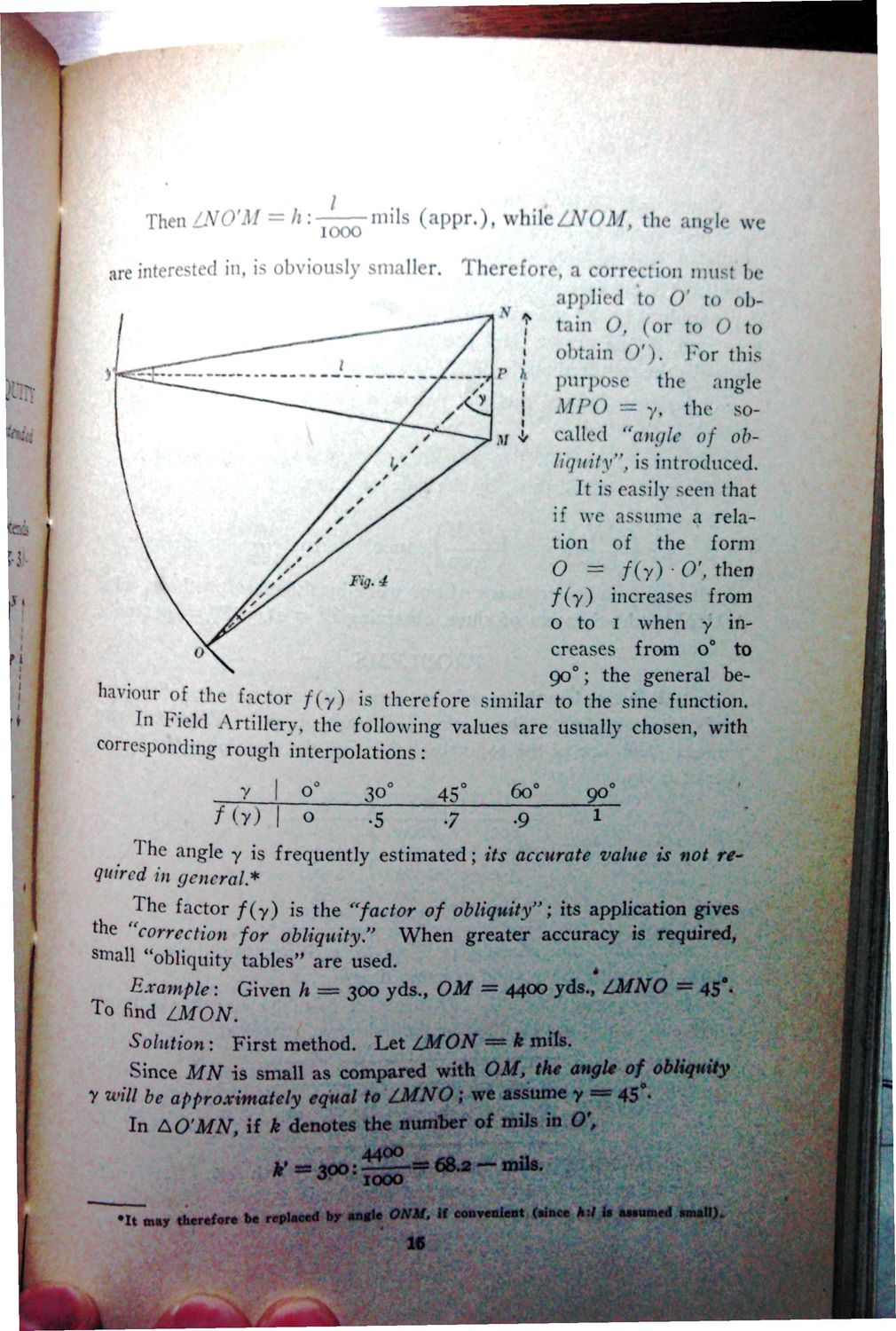| |
| |
Caption: War Publications - WWI Compilation 1923 - Article 46
This is a reduced-resolution page image for fast online browsing.

EXTRACTED TEXT FROM PAGE:
Then INO'M = h: / 1000 mils (appr.), wlnleZJVO.l/. the angle we are interested in, is obviously smaller. Therefore, a cm reel ion must U applied to O' to obtain (>, I or to () to obtain ()'). For this ., p h purpose the angle V \iro the so_v ^ called "angle of obliquity?', is introduced. It is easily seen that if we assume a relation of the form O ~ / ( y ) 0', then / ( y ) increases from o to I when y increases from o° to 0 90 ; the general behaviou r of the factor / ( y ) is therefore similar to the sine function. In Field Artillery, the following values are usually chosen, with corresponding rough interpolations: \ * V O 30 45° 60 90 1 /(y) o •5 7 mated •9 quired in general.* The factor / ( y ) is the "factor of obliquity"; its application gives th "correction for obliquity" When greater accuracy is required, small "obliquity tables" are used. Example 2 Given h = 300 yds., OM = 4400 yds., IMNO 45 To find IMON. Solution: First method. Let IMON — k mils. MN is small as compared with OM, the angle of obliquity xitnatcly equal to LMNO; we assume 45°'MN, *' 4400 : = 3°° 1000 • • .2 mils "ttty therefor* be replaced by angle ONM. \i convenient (since hit is MM 1 A
| |